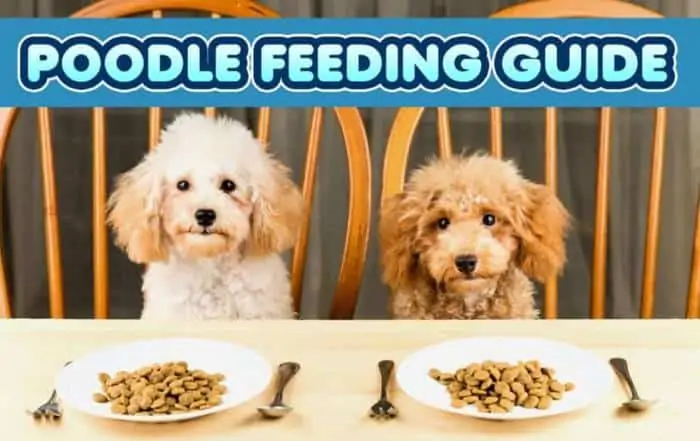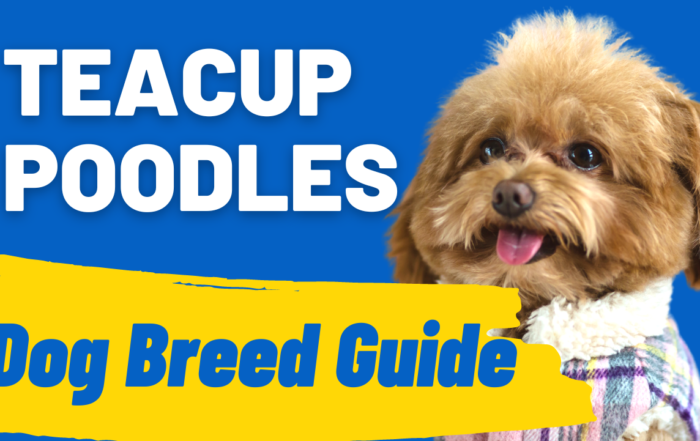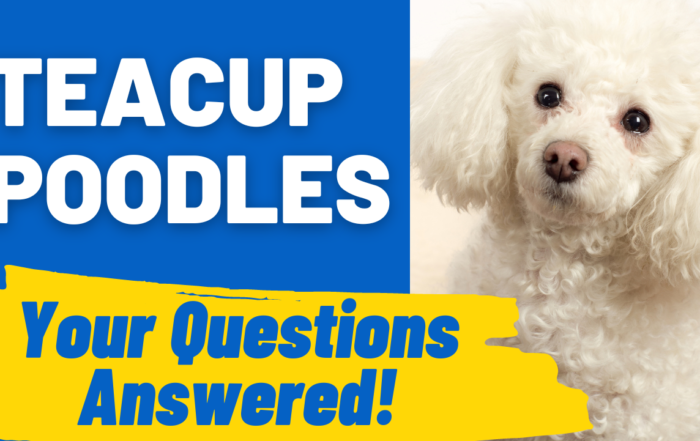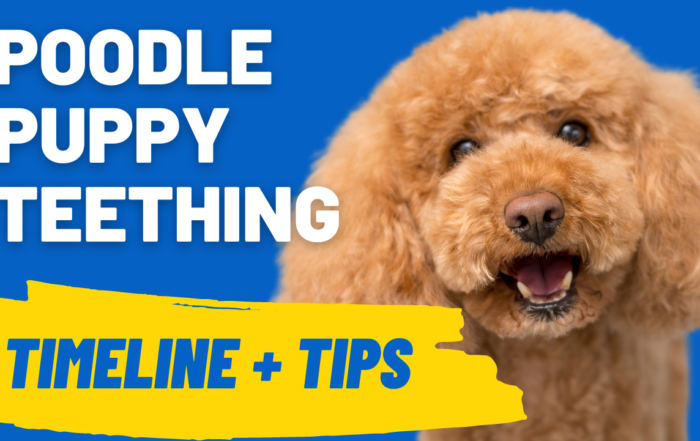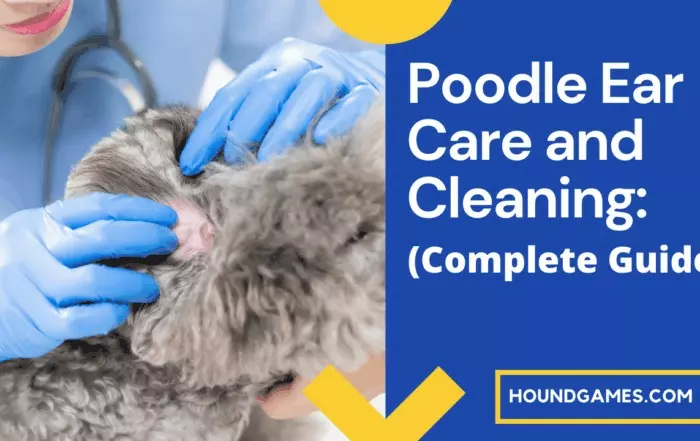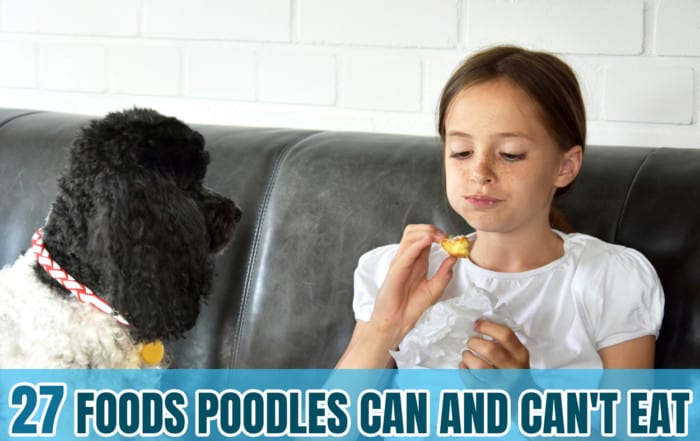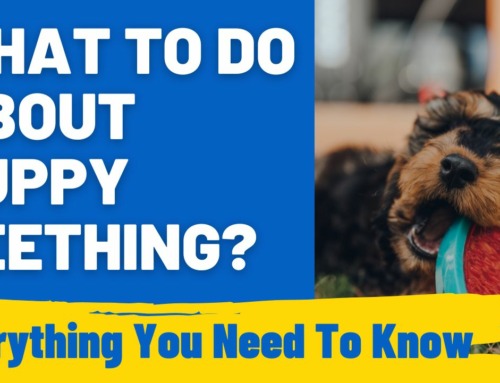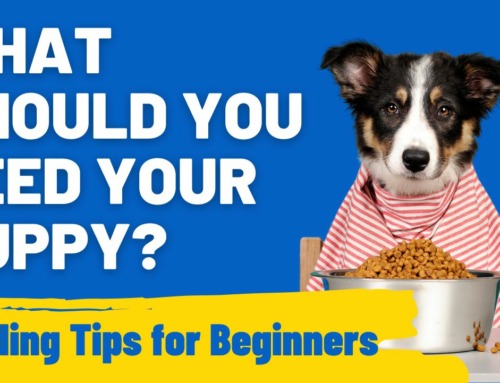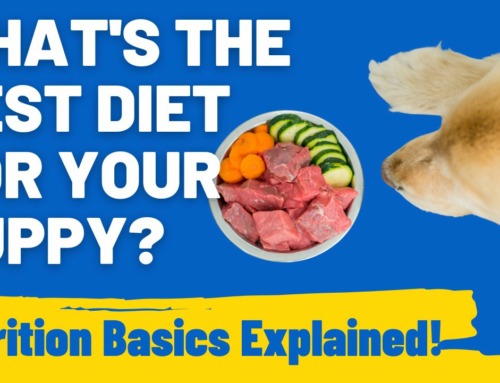You’ve picked up your new Poodle puppy, and are busy with training, socialization, and getting to know your new puppy. However, something seems off – their quintessential curly Poodle coat is flat, straight, or just wavy!
If you’ve found yourself with a wavy-haired, or straight-haired, poodle, don’t fret. For many Poodles, it simply takes some time to develop the curls of an adult Poodle.
We’ll dive into the transition from puppy to adult coats in poodles, as well as how you should manage their straight hair during this time to prevent it from matting.
When will my Poodle’s coat become curly?
Toy and Miniature Poodles will experience a change from a straight or wavy coat to a curly coat starting at 9 months of age and lasting until they are 18-24 months old.
Standard Poodles also experience this starting around 9 months old, but they usually have their complete adult coat by the age of 12 months.
When Poodles are born, their coat is often very different than it will be as an adult dog. Instead of the thick coat of tight curls, you’ll often find your Poodle puppy to have a straight or slightly wavy coat that is soft and fluffy.
For many Poodles, this is simply the average puppy coat and will change with age.
During this time, your Poodle’s coat is much more likely to mat than usual, and they will need extra grooming if their hair is kept long – even daily brushing.
The soft puppy coat is likely to tangle with the coarse and dense adult coat if not properly maintained.
This is one of the few times in your Poodle’s life where you may notice an increase in shedding.
Once your Poodle has developed their adult coat, they do not tend to shed as much as other breeds, such as the double-coated Labrador Retriever.
This is because Poodles have hair that continuously grows. You may still find hair that your Poodle has shed, of course, the same as we find our own hair in a brush or shower drain.
You may notice some shedding during this transition period though, as they will be replacing their puppy coat with a brand new coat of adult hair.
Would you like to read our post: How long does poodle hair grow?

Will my Poodle’s coat always go curly?
Not all Poodles have a curly coat, especially if they are being bred for purposes other than shows.
The proper coat for a Poodle will be curly, dense, and of a harsh texture or kept in carefully created cords that take a large amount of work to maintain.
Any other variety of coat, such as straight hair, is considered incorrect for the breed.
However, because the Poodle is a popular breed, there are unfortunately those who are breeding Poodles without regard to their breed standard, appearance, or health testing. This is information that breeders should obtain from The Poodle Club of America.
Knowing the types of coats that your Poodle’s parents have is an excellent indicator if your puppy will end up with a curly, straight, or wavy coat.
While the most important part of your new Poodle isn’t if they have a correct, curly coat or an improper, straight or wavy coat, it’s one indication that the breeder is breeding without full knowledge of best practices.
You can love your Poodle no matter the type of coat, but you also need them to be healthy and have a solid temperament so they can grow and live with you for the rest of their (hopefully long) lives.
Are you interested in learning more about Teacup Poodles? Enjoy our post, Teacup Poodles: Your Questions Answered.
Grooming your wavy or straight coat Poodle puppy
You should take advantage of the wavy or straight coat that most Poodle puppies sport, as it’s often easier to care for than the curly coat of an adult.
The coat won’t care for itself, though, and proper grooming is a requirement when owning a Poodle. We have a bathing a poodle guide that you might find helpful: Bathing a Poodle: How often should it be done?
Unless you have grooming experience yourself, it’s likely that your Poodle puppy will visit a professional groomer every 4-8 weeks.
The length of time between visits depends on how well you are able to maintain their coat on your own, how dirty they get living their normal life, and how long their coat is.
Start grooming your poodle early
You should start a relationship with your Poodle and a groomer at a young age, so your Poodle puppy is able to become comfortable with the process.
Even if your Poodle doesn’t need a full haircut, they can still benefit from visiting the groomer for a bath, blowdry, and nail trimming experience.
Many Poodles also have their face and feet shaved, with varying lengths of coat on the rest of their body. Here is our guide to face shaving a poodle.
If you don’t plan to show your Poodle, however, you can keep them in whichever style of cut you prefer. For the majority of owners, this will mean keeping them cut relatively short over their entire body, to prevent matting and make coat care easier.
Poodle Hair Matting
It’s extremely important, no matter the cut of your Poodle, to brush them frequently. If you don’t, your Poodle will develop mats.
Matting can lead to skin problems as the area under the mat, next to the skin, stays warm and moist. The mats themselves can also cause damage.
When mats form tight and next to the skin, they will pinch and pull your dog’s skin along with the hair, which is painful and can even leave bruises.
The type of brush that is best for your Poodle will vary based on their individual coat and how long their coat is, so it’s ideal to ask your Poodle’s groomer to show you the equipment they recommend.
For many Poodle owners, a comb, pin brush, and slicker brush are staples.
Bathing your poodle
Bathing your Poodle frequently, once every 2-3 weeks, will also help you maintain their coat. A dirty coat is more likely to mat than a coat that is clean, with hair that is soft and stands on its own.
A blow-dryer is also an important piece of grooming equipment if you own a Poodle and bathe them yourself, since it will allow you to dry them all the way to their skin, even with a thick and coarse coat.
As your Poodle puppy’s coat transitions to the adult coat, the mix of wavy and curly hair can cause matting and tangles much quicker than usual.
During this time of transition, it’s important to brush your Poodle more frequently – daily in many cases.
You can also consider making more frequent trips to the groomers and keeping their hair shorter during this time, so there is less hair to tangle.
Final Word on Straight Haired Poodles
If your poodle is still a puppy, then the chance of your poodle outgrowing its straight or wavy hair is strong. Although unlikely, there are adult poodles with straight or wavy hair. This will only mean you can’t enter them into poodle dog shows, but it won’t mean they aren’t amazing and beautiful!
Your Poodle Feeding Guide: Toy, Mini, Standard
There’s much to learn when it comes to feeding your Poodle. Things like what food they should eat, how much they should eat, and what human foods should be avoided. We've simplified things with [...]
Teacup Poodles: Breed Information, Behaviors, Training, and Health
There's nothing more adorable than a Teacup Poodle. Although not officially recognized as there own breed by the American Kennel Club, they are none-the-less bred and sold. They are actually a toy poodle that [...]
Teacup Poodles: Your Questions Answered
Teacup Poodles are the crème de la crème of miniature dog breeds. They’re fluffy, cute, and affectionate, making them an irresistible addition to the family. They offer ample amounts of loyalty, joy, and companionship, [...]
Poodle Puppy Teething Stages: Timeline and Guide
Poodle puppies, like all dogs, go through a teething period. There are various phases you will go through during this time, and they can be challenging. Hopefully this guide and teething timeline will help you [...]
Poodle Ear Care and Cleaning: (Complete Guide)
Poodles, whether of the Toy, Miniature, or Standard variety, require much more grooming and upkeep than other breeds of dogs. This includes keeping their coat clean and free of mats, as well as paying special [...]
27 Foods Poodles Can and Can’t Eat: Fruits, Vegetables, Meats, Nuts
Can poodles eat human food? Ask anyone and you will soon find that most people have a blanket response… either a straight yes, or a resounding no! But the answer should be: it depends on [...]


